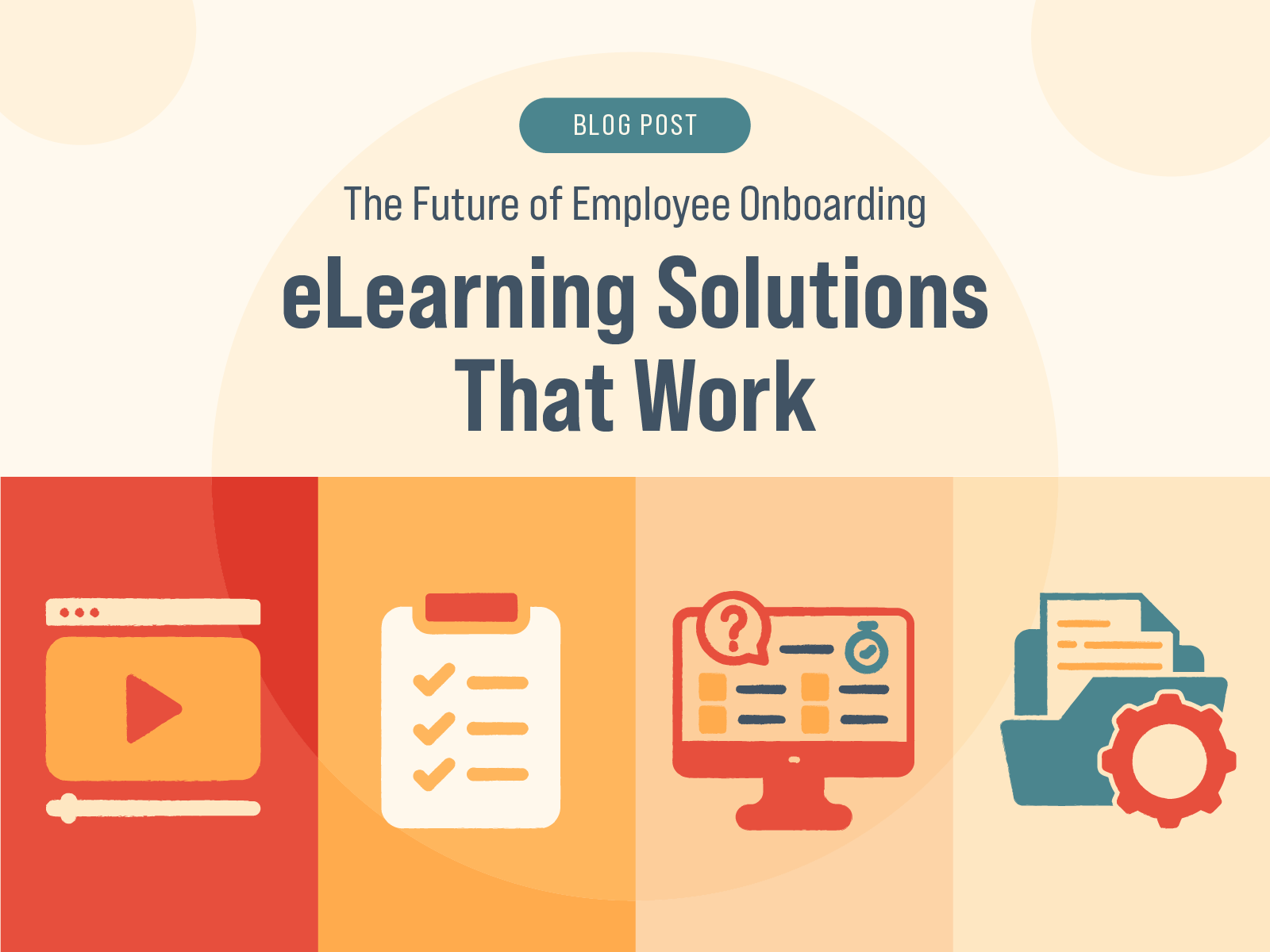Lost in Translation: Mastering Multilingual eLearning
In our interconnected world, the demand for globalized education is undeniable. As eLearning courses continue to bridge geographical gaps, the need for accurate and culturally sensitive translations becomes increasingly apparent. Unfortunately for us L&D professionals, it's not as easy as simply dropping a paragraph into Google Translate. While that can certainly be an amazing resource, custom, company-specific training generally needs a more direct approach (trust us on this...we've had to fix some courses from other vendors with comically absurd translations). Translating eLearning courses is more than just converting words from one language to another; it's about ensuring the content resonates with diverse audiences while maintaining educational efficacy. Here are some key lessons we've picked up along the way that you should keep in mind if translating eLearning courses into other languages:

1 Understanding Cultural Nuances:
Cultural differences can significantly impact the interpretation of content. Visual metaphors, idiomatic expressions, and even color symbolism may vary across cultures. Prioritize translators who are not only proficient in the target language but also well-versed in the cultural nuances of the audience.
2 Adapting for Regional Variances:
Languages can have significant variations across different regions or countries. Consideration should be given to regional dialects, vocabulary preferences, and even the use of formal or informal language. Tailoring the content to the specific linguistic preferences of the target audience enhances engagement and comprehension.
3 Localization of Images and Multimedia:
Visual elements play a crucial role in eLearning courses. Ensure that images, videos, and multimedia elements are not only translated but also culturally adapted. Icons, images, and scenarios should be relatable and appropriate for the target audience, taking into account local customs, traditions, and sensitivities.
4 Text Expansion and Contraction:
Some languages naturally require more or fewer words to express the same concept. Be mindful of text expansion or contraction, as it can affect the layout and design of the course. Allow for flexibility in the design to accommodate variations in text length to maintain a visually appealing and readable format.
5 Consistent Terminology and Style:
Establish a consistent terminology and writing style across the entire course. Create a glossary of terms that ensures uniformity in translations. This not only enhances clarity for learners but also maintains the integrity of the content.
6 Consideration for Right-to-Left Languages:
If translating into languages that read from right to left, such as Arabic or Hebrew, ensure that the course layout and design are adjusted accordingly. This includes reversing the order of elements and aligning visuals appropriately.
7 User Interface and Navigation:
Translating the course content is essential, but don't overlook the translation of the user interface and navigation elements. Buttons, menu options, and navigation instructions should be clear and intuitive in the target language to enhance user experience.
8 Quality Assurance and User Testing:
Before launching the translated eLearning course, conduct thorough quality assurance and user testing. Ensure that the translated content is accurate, culturally appropriate, and aligns with the educational objectives. User feedback from diverse language groups can be invaluable in refining the course.
9 Legal and Compliance Considerations:
Some regions have specific legal and compliance requirements for educational content. Ensure that the translated eLearning course complies with local regulations and standards to avoid any legal complications.
10 Continuous Updates and Feedback Loops:
Languages evolve, and so do cultural norms. Establish a system for continuous updates and feedback loops to address any changes in language usage or cultural dynamics. This ensures that your eLearning courses remain relevant and effective over time.

Translating Courses Built in Articulate Storyline
Articulate Storyline is a powerful eLearning authoring tool (and our personal favorite at Allegro) that offers some excellent features to facilitate the seamless incorporation of translations. Here's a look at some of the key features that we use on a daily basis to assist and enhance the translation process:
1 Multilingual Player Controls:
Storyline allows users to customize the player controls, including navigation buttons, labels, and instructions. This feature is particularly beneficial when translating courses into different languages. By adjusting these controls, you can ensure that learners interact with the course in a language that is familiar to them.
2 Text Labels and Variables:
Storyline allows for the use of variables and text labels, making it easier to manage and update text throughout the course. When translating, you can create language-specific variables and labels, enabling a more efficient workflow for translators. This ensures consistency in terminology and facilitates easy updates across the entire course.
3 Export and Import Translations:
Articulate Storyline supports the export and import of translation files. After exporting the text for translation, translators can work on the content in a format that is easily manageable. Once translated, the files can be re-imported into Storyline, streamlining the process and minimizing the risk of errors.
4 Slide Master and Layouts:
The Slide Master feature in Articulate Storyline allows you to create a consistent design for your course. When translating content, you can make changes to the Slide Master and layouts to accommodate variations in text length and layout preferences. This ensures that translated content maintains a visually cohesive and professional appearance.
5 Audio and Video Localization:
For courses that include audio or video elements, Storyline facilitates the localization of multimedia content. You can replace or update audio recordings and subtitles to align with the translated script. This feature is crucial for maintaining engagement and delivering a comprehensive learning experience in different languages.
6 Responsive Design for Multiple Languages:
Articulate Storyline supports responsive design, allowing courses to adapt to different screen sizes and orientations. This feature is particularly important when translating content into languages that may have different sentence structures or require additional space. Responsive design ensures a seamless and user-friendly experience across devices.
7 Review and Collaboration Tools:
Storyline offers collaborative features that enable effective communication between instructional designers, developers, and translators. Comments and review features can be utilized to discuss specific translation choices, ensuring that the final product aligns with both linguistic and instructional goals.
8 Conditional Triggers and Branching:
Conditional triggers and branching in Storyline allow you to create adaptive content based on user choices or language preferences. By incorporating these features, you can tailor the learning experience to different language paths, providing a personalized and relevant journey for learners.
9 Built-in Quizzing and Assessment Localization:
If your eLearning course includes quizzes or assessments, Storyline provides the flexibility to localize questions, answer choices, and feedback. This ensures that assessments are culturally appropriate and effectively measure learning outcomes in the target language.
10 Versioning and Archive Options:
Storyline includes versioning and archiving options, allowing you to keep track of different language versions and revert to previous versions if needed. This feature is essential for managing multiple language iterations and maintaining a clear audit trail of changes made during the translation process.
Incorporating these features within Articulate Storyline can significantly streamline the translation process and enhance the overall effectiveness of multilingual eLearning courses. By leveraging the capabilities of this robust authoring tool, instructional designers and translators can work collaboratively to create engaging and impactful learning experiences for diverse global audiences.
Let Allegro Media Be Your eLearning Translation Partner
Successful translation of eLearning courses goes beyond language proficiency. It requires a deep understanding of cultural context, attention to detail, and a commitment to providing an inclusive and effective learning experience for a diverse global audience. Over the years we've developed hundreds (if not thousands) of courses in every language imaginable (even Klingon if you can believe it). By focusing on these tips, you can create eLearning courses that transcend linguistic boundaries and deliver impactful educational content to learners around the world. And if you need a hand or a trusted partner, Allegro Media Design has your back! Reach out today and we'll build something amazing together!
More Articles


Gamification in eLearning: Why It Works and How to Implement It

The Future of Employee Onboarding: eLearning Solutions That Work

What is SCORM and What Does it Matter

Accessibility in eLearning: Why It’s Essential and How to Achieve It

Microlearning: Bite-Sized Training for Big Results

Soft Skills Training Through eLearning: Building Better Leaders

How to Write Learning Objectives for eLearning Courses

When to Outsource Your eLearning Development (and How to Choose the Right Partner)

Employee Engagement in 2025: How eLearning Can Help

Training for a Multigenerational Workforce: Meeting Everyone’s Needs

The Future of eLearning: 4 Trends Shaping the Industry

How To Find the Right eLearning Developer

What Makes eLearning Effective?

Transform Your eLearning with the Magic of Animation

How to Use Audio to Enhance eLearning

Boost Learning Efficiency with Microlearning

Give Your Dated eLearning a Fresh Facelift

The Process of eLearning Part 5: The Implementation Phase

The Process of eLearning Part 4: The Development Phase

The Process of eLearning Part 3: The Design Phase

The Process of eLearning Part 2: The Analysis Phase

The Process of eLearning Part 1

Empower Your Workforce with Self-Paced Training

Elevate Your Training with Exceptional Visual Design

Taking the Confusion Out of SCORM

Embrace Efficiency: The Power of Outsourcing Your eLearning Production

Mastering eLearning: Elevating Corporate Training Through Scenario-Based Learning

Converting ILT to vILT: Embrace the Virtual Shift

Spice Up Your Boring Corporate Training With Animated Videos Copy

From Concept to Clicks: The Crucial Role of eLearning Developers

Training Crossroads: ILT or eLearning – What's Your Strategy?

How to Transform Boring Compliance Training

Last-Minute Crunch? Allegro Media Delivers Rapid eLearning Solutions Just-In-Time!

The Art of Chunking (or How to Eat a Whale)

Zen & The Art of eLearning Maintenance: Finding Harmony with Allegro Media Design

How to leverage ChatGPT for eLearning Applications

What Should I Look for When Hiring an eLearning Vendor?

Unveiling the Future of eLearning: Trends to Watch in 2024

Subject Matter Experts: Be Proud! Allegro loves you just how you are!

What in the World is an LMS?

Enhancing eLearning Engagement: The Power of Scenario-Based Interaction with Stylized 3D Motion Images

Enhancing eLearning with DALL-e: Adding Visual Reinforcement for Engaging Corporate Training

Choosing the Right Authoring Tool for Your eLearning Course

High Quality Audio is ESSENTIAL in Modern eLearning

What in the World is SCORM?

A Complete Guide to Leadership Training and Development

Benefits of Customer Service eLearning Training

14 Tips To Effectively Use Audio for eLearning Courses

10 Instructional Design Tips for Effective eLearning

Why You Should Use eLearning For Product Training

Benefits of Voice Overs for Your Business

How to Create Great eLearning Content: 9 Tips

Video Marketing for Business: 10 Benefits of Promotional Videos

Gamification in the Workplace: Why and How to Use It

5 Best Practices for Training Remote Employees

How to Avoid eLearning Burnout and Fatigue

What Is Customer eLearning Training and Why Do You Need it?

8 eLearning Sales Training Best Practices: Tips & Use Cases

How to Effectively Use Videos in eLearning

Best Practices for Remote Employees Onboarding with eLearning

Why You Should Invest in Corporate eLearning?

How Can eLearning Reduce Employee Burnout?

How to Motivate Employees to Participate in eLearning Training: 9 Tips

eLearning Trends and Predictions: 2022 Forecast

7 Reasons to Outsource Your eLearning Course Development
%20to%20Virtual%20Instructor-Led%20Training%20(VILT).jpg)
How to Convert Instructor-Led Training (ILT) to Virtual Instructor-Led Training (VILT)

12 Best Tips on How to Improve Employee Training with Gamification in 2021-2022

What Is Compliance Training and Why Is It Important for Your Business?
%20vs.%20eLearning.jpg)
Instructor-Led Training (ILT) vs. eLearning: Which Should I Choose?

The Difference Between An Instructional Designer And An eLearning Developer
















